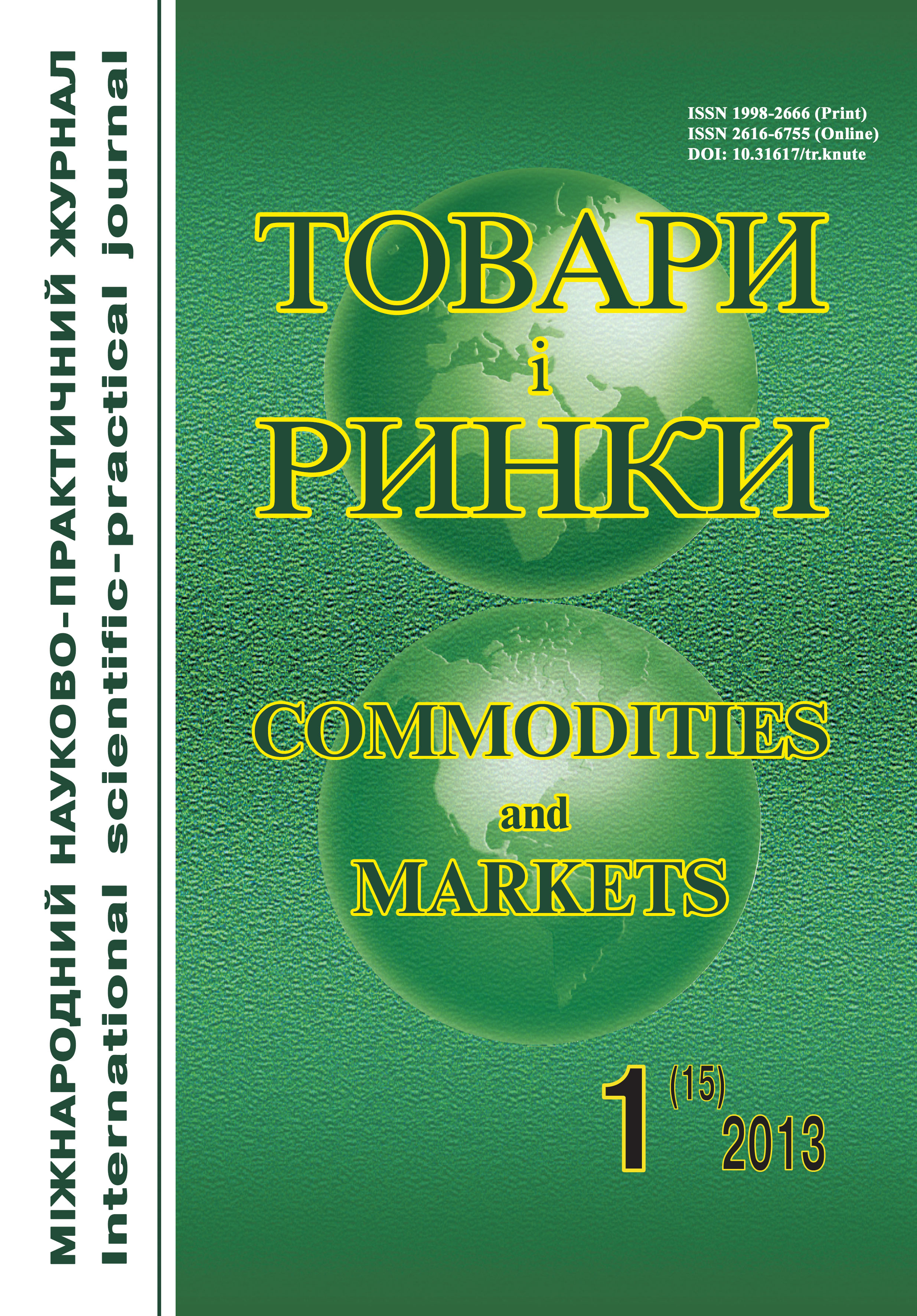Utilization of waste in the food industry with biogas
Keywords:
biogas utilization, comprehensive bio utilization, biogas, integrated waste processingAbstract
Background. Biogas utilization is an attractive segment of the bioenergy. However, biogas fermentation in livestock waste is characterized by relatively low values of output, especially compared with the processing of food waste which decomposition adversely affects the environment. Promising bases for such processing may be food enterprises of cooperative manufacturing on the basis of common industrial sites.
Material and methods. For the modeling of methane genesis a series of experiments was conducted. The study material is a series of samples of waste of different chemical composition, one of which – a model of multi-component substrate. The following research methods were used: laboratory (GOST 31371.3–2008) and methods of mathematical and statistical data processing.
Results. On the basis of chromatographic analysis of samples of biogas generated during the experiment image dependence of formation of methane on time of decomposition of waste samples were designed. Experimental data and its mathematical-statistical analysis shows that in the steady state of methane phase of anaerobic fermentation of complex waste utilization by company Ltd "Titan", the methane content in biogas varies in the range of 54–55 %.
Conclusion. Complex processing of food waste of cooperative enterprises is very relevant today. Bio fertilizers derived from food waste methane genesis are highly effective, and biogas is an alternative source of energy that can be used for various domestic and industrial needs.
References
Metody obezvrezhivaniya otkhodov. — Rezhim dostupa : [http://uchebnikfree.com/page/dikanuch/ist/ist-3--idz-ax233--nf-37.html].
Shevchenko R. I. Ekologo-energetichne obruntuvannya bogazovikh tekhnologj / R. Shevchenko, V. V. Kompants // Kharchova nauka tekhnologya. — No 3. — 2012. — S. 87—89.
Baader V. Biogaz: teoriya i praktika / V. Baader, E. Done ; per. s nem. m. i. serebryanogo. — M. : Kolos, 1982. — 148 s.
Beker M. E. Biotekhnologiya / Beker M. E., Liepinsh G. K., Rajpulis E. P. — M. : Agropromizdat, 1990. — 334 s.
Nikitin G. A. Metanovoe brozhenie v biotekhnologii / G. A. Nikitin. — K. : Vischa shkola, 1990. — 207 s.
Tan Benilda V. Anaerobic digestion of some fruit processing wastes for biogas production / Tan Benilda V. / Alternative Energy Sourses VIII. Proc. Secc. Non-Sol/Energy Sth Miami Int. Conf., Miami Beach. Fla. 14–16 Dec. 1997. — Vol. 1. — New York, 1999. — P. 855—863.
Korznikova M. V. Otsenka stepeni konversii organicheskogo veschestva otkhodov zhivotnovodstva i ptitsevodstva v biogaz (na primere rf) / Korznikova M. V., Blokhin A. Yu., Kozlov Yu. P. // Vestn. Voronezhskogo gos. un-ta. — No 2. — 2008. — S. 108—111. — (Seriya "Khimiya. Biologiya. Farmatsiya").
Patent 48730. — Rezhim dostupa : [http://base.ukrpatent.org/searchinv/search.php?action=viewdetails&idclaim=143644&chapter=description].
GOST 9793–74. Produkty myasnye. Metody opredeleniya vlagi. — Rezhim dostupa : [http://vsegost.com/catalog/36/36372.shtml].
GOST 29301–92. Produkty myasnye. Metod opredeleniya krakhmala. — Rezhim dostupa : [http://vsegost.com/catalog/10/10112.shtml].
GOST 25011–81. Myaso i myasnye produkty. Metody opredeleniya belka. — Rezhim dostupa : [http://vsegost.com/catalog/22/22400.shtml].
GOST 23042–86. Myaso i myasnye produkty. Metody opredeleniya zhira. — Rezhim dostupa : [http://vsegost.com/catalog/12/12259.shtml].
GOST r 53642–2009. Myaso i myasnye produkty. Metod opredeleniya massovoj doli obschej zoly. — Vved. 2009—15—12. — M. : Standartinform, 2010. — 12 s.
GOST 3626–73. Moloko i molochnye produkty. Metody opredeleniya vlagi i sukhogo veschestva. — Vved. 1974—01—07. — M. : Izdatelstvo standartov, 1973. — 12 s.
GOST R 51259–99 (din 10344–82). Moloko i molochnye produkty. Metod opredeleniya laktozy i galaktozy. — Rezhim dostupa : [http://docs.cntd.ru/document/1200028141]. — 8 s.
GOST 23327–98. Moloko i molochnye produkty. Metod izmereniya massovoj doli obschego azota po keldalyu i opredelenie massovoj doli belka. — Vved. 2000—01—01. — Minsk : Mezhgos. sovet po standartizatsii, metrologii i sertifikatsii, 1998. — 8 p.
GOST 5867–90. Moloko i molochnye produkty. Metody opredeleniya zhira. — Vved. 1990—26—07. — M. : Standartinform, 2006. — 15 s.
GOST 13496.3–92. Kombikorma, kombikormovoe syre. Metody opredeleniya vlagi. — Vved. 1993—01—01. — M : Standartinform, 1992. — 4 s.
GOST 13496.4–93. Korma, kombikorma, kombikormovoe syre. Metody opredeleniya vlagi. — vved. 1995—01—05. — Minsk : Mezhgos. sovet po standartizatsii, metrologii i sertifikatsii, 1993. — 17 s.
GOST 13496.2–91. Korma, kombikorma, kombikormovoe syre. Metod opredeleniya syroj kletchatki. — Rezhim dostupa : [http://standartgost.ru/gost%2013496.2-91].
GOST 31371.3–2008. Gaz prirodnyj. Opredelenie sostava metodom gazovoj khromatografii s otsenkoj neopredelennosti. — Vved. 2008—06—06. — Minsk : mezhgos. sovet po standartizasii, metrologii i sertifikatsii : M. : Standartinform, 2009. — 16 s.
Shevchenko R. I. Perspektivi kompleksno pererobki vdkhodv kharchovikh virobnitstv na bogaz / R. I. Shevchenko, V. V. Kompaniets // Novtny tendents u kharchovikh tekhnologyakh ta yakist i bezpechnist produktiv : zb. nauk. pr. ; 5 vseukranska nauk.- prakt. konf., 5–6 kvt. 2013 r. — L. : LIET, 2013. — P. 114—116.
Tyazhelye metaly. — Rezhim dostupa : [http//www.dietolog.org/components/food-toxins/heavy-metals].



